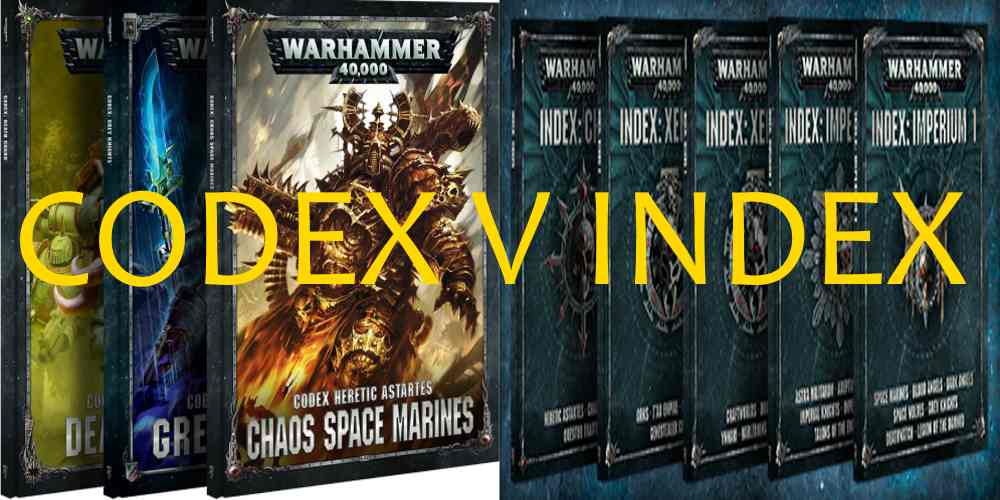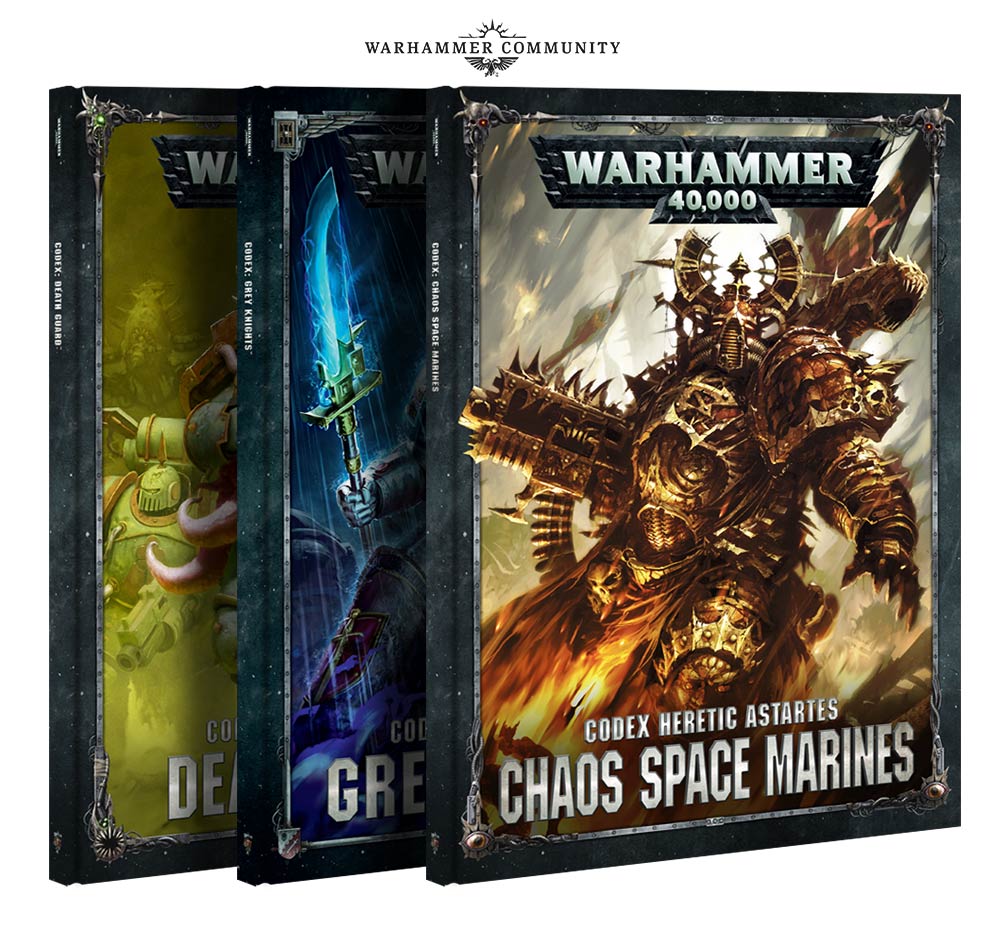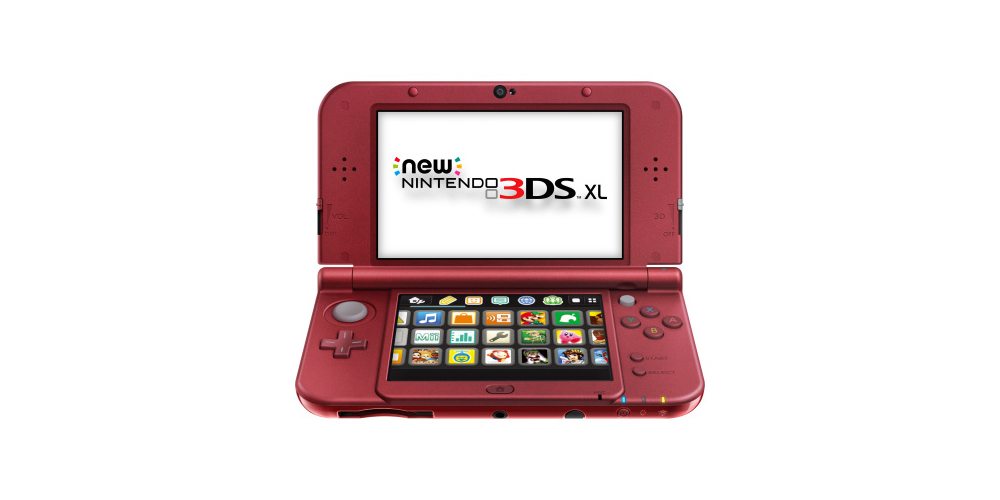 Last week, I waxed lyrical about Games Workshop’s new Warhammer 40,000 Indexes. These are five books that enable players to immediately access the new rules with all their existing figures. If you had a big enough collection, the full set might set you back $125, but I would guess for average collectors, you’d be looking at $50–maybe $75–as the books are $25 each. The Indexes replaced all the existing Codexes and are a good thing.
Last week, I waxed lyrical about Games Workshop’s new Warhammer 40,000 Indexes. These are five books that enable players to immediately access the new rules with all their existing figures. If you had a big enough collection, the full set might set you back $125, but I would guess for average collectors, you’d be looking at $50–maybe $75–as the books are $25 each. The Indexes replaced all the existing Codexes and are a good thing.
Games Workshop has now announced a pretty intensive release of new Warhammer 40,000 Codexes, with up to date and expanded rules, to take the game forward. Suddenly, those Indexes are looking like a temporary stop-gap and an expensive one at that.
So where does that leave us? Should I buy an Index?
The reality is, if you want to play Warhammer 40,000 8th edition, with old figures, right now, you pretty much have to. You might be lucky and be a Space Marine player–Codex slated for July–or one of the other 3 on their way (Chaos Space Marines, Grey Knights, and Death Guard), but otherwise, as it stands, who knows when your army will get a Codex?
Have Games Workshop been underhand?
“Mostly, no.” They’ve never made any secret of the fact Codexes are on their way. I’m a little surprised it’s been so quick, but perhaps I shouldn’t have been. The designers have been working overtime, churning out games and supporting products at an unprecedented rate. Which is all good for the hobby, right?
Not if you listen to some people on the internet today. They are aggrieved (with some justification) that they’ve spent money on Indexes to play the game they love, and very soon they’ll have to spend a whole lot more. But do they?
Again, the answer is “Mostly, no.” Whilst it’s true that the rules in the Codexes will supersede the rules in the Indexes, if you own an Index, you’ll have fully functioning armies for the foreseeable future. The problem will only arise if you want to play tournament games. It’s been categorically stated that the rules in the Codex will overwrite those in the Index. So if you’re a serious player, you’ll have to upgrade.
For those who are in it for the craic, you’ll still get years of use out of your Indexes. The game will still work. Newly produced miniatures are going to have their datasheets published with them, so when buying new models, you can build your repository of data as you go. You may have to have a discussion with new gamers you encounter as to which version of the rules you are applying, but there’s no reason suspect differences and discrepancies will be huge enough to break the game.
What else could Games Workshop have done?
They could have made all the legacy data free. This would have been a generous thing to do. But unlike Age of Sigmar, the Warhammer 40,000 armies are staying current. All the obsolete armies from the old fantasy game were given warscrolls for free. For 40K everything remains playable. No company is going to give away that much intellectual property.
This left the alternative of not publishing Indexes at all and immediately churning out Codexes. If thousands of gamers were suddenly without rules, with a long lead time before they got them, the Adeptus Mechanicus would have heard the screams on Mars. Games Workshop had little choice. Stop-gap Indexes are an imperfect solution to the problem left by overhauling its flagship game.
GW could (and should) have put out a release schedule, so players can know whether their armies are getting a new Codex in the near future. Players could then decide whether they want to muddle through until a Codex is released. This would have been the fairest way to do things, and perhaps the company can be faulted for not doing so.

What might Codexes mean for the game?
It’s hard to predict what Codexes might mean for the evolution of the game, especially for a player as inexperienced as myself. One possible concern is that game balance may tip towards armies for which Codexes exist. For Warhammer: Age of Sigmar, the general consensus seems to be that the new armies with recently written “Battletomes” (the AoS equivalent of Codexes) are stronger than those armies who haven’t been given a revamp. New rules always seem to mean new loopholes to exploit, and I expect we will hear such complaints from strong gamers. If you are a casual player, playing with friends or your children, I don’t imagine you’ll notice a difference.
Why will I want a Codex?
If you like Warhammer 40,000 enough to want to keep playing games and build and paint your army, buying a Codex is an inevitability. They’re going to be well-produced, packed full of lore, artwork, and extra rules and features for you to use. Wargamers tend to be completists by nature and for enthusiasts of the game, it’s going to be mighty difficult not to succumb to the temptation of another beautifully crafted hardback book.
My kids love their old Codexes, and I imagine they will want new ones when the time comes. Half the game at that age is making up army lists and stories, and being inspired by the miniature painting in the photos. Codexes allow the game to continue even when there isn’t time or space to play.
If you haven’t bought an Imperium Index yet, and intend on collecting Space Marines (as outlined in last week’s post), then with the Codex release imminent, I would hold off for the couple of weeks it will take to come out. If you are an Ork player, I don’t know, but my gut reaction is that an Ork Codex won’t be out before Christmas, so an Index could well still be the way to go. But that’s just a hunch and based on no facts whatsoever, so don’t hold me to it!
I’m just starting out with the game, and I imagine it will be a few months yet before I feel the need to pick up a Codex. I do know, however, sumptuous new miniatures and extra abilities will mean that, at some point, I cave in and buy one.

